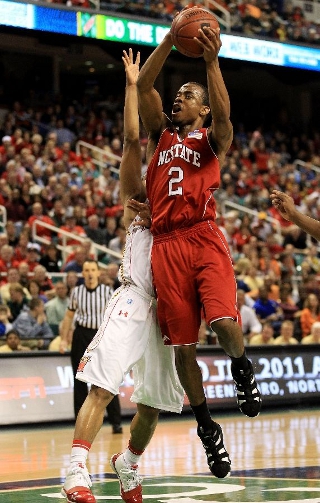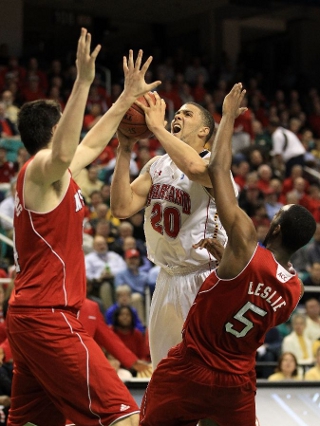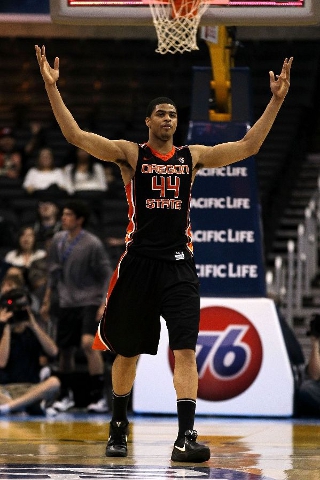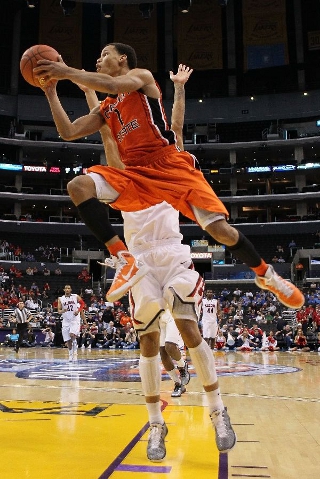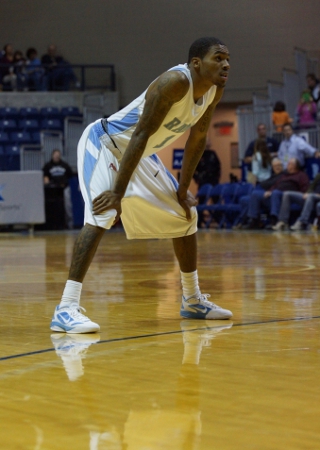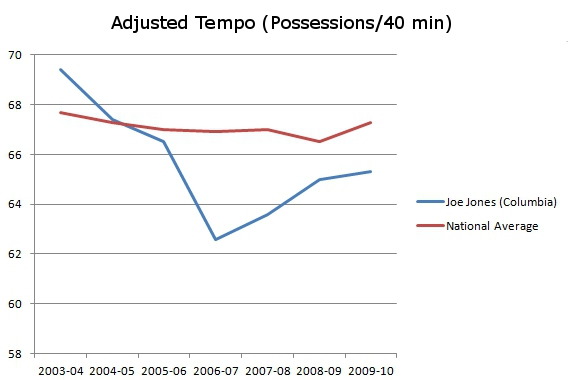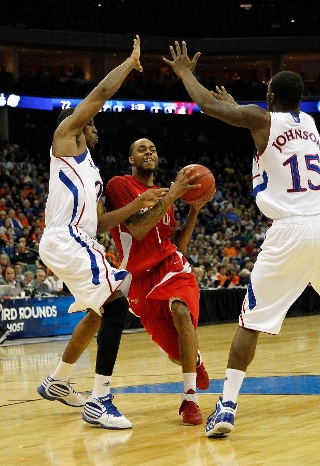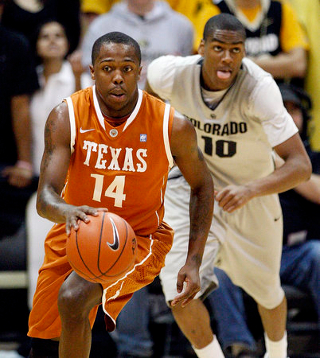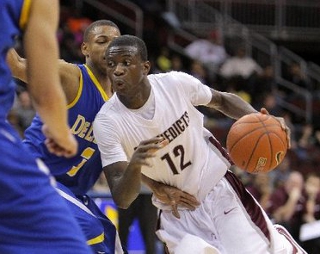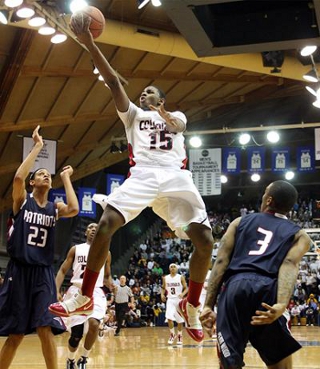IZOD Center | East Rutherford, NJ | Tip: 5:30 P.M. CT TV: Longhorn Network | Online: ESPN3.com LRT Consecutive Game #190 On Saturday night, Texas fans got their first taste of the nausea and heartburn caused by rooting for a young, inexperienced team. In the semifinals of the TicketCity Legends Classic, the Longhorns failed to execute in the final minutes, allowing Oregon State to force overtime and eventually escape with a 100-95 win. The team had little time to dwell on the loss, as less than 48 hours later they square off against a formidable NC State team in the consolation game. The Wolfpack was expected to be rebuilding this year under new coach Mark Gottfried, but have looked impressive in the first two weeks of the season and could make some noise in a top-heavy ACC this year. By the numbers NC State has been an enigmatic team so far this year, as suspensions and injuries have made it difficult for Coach Gottfried to find his optimal lineup. He’s utilized seven different starters so far this year, and it’s just a matter of time until sophomore star C.J. Leslie ups that number to eight with his first appearance in the starting five. The Wolfpack’s strength lies in a talented frontcourt, which allows them to grab nearly 40% of their missed shots and score at will in and around the paint. NC State is shooting 57.1% from inside the arc, with 166 of their 314 points (52.9%) coming in the paint. It’s not just the big men putting back missed shots, though, as the guards and wings are incredibly adept at drawing the defense with penetration and dumping it underneath or kicking it out for open midrange jumpers. Defensively, the team’s two weaknesses are perimeter defense and a tendency to send opponents to the free throw line. Fortunately for the Longhorns, they have been solid this season both behind the arc and at the charity stripe. Wolfpack opponents are shooting 42.9% from long range and have made at least eight three-pointers in every game.
Lorenzo Brown’s dribble penetration is hard to stop The Wolfpack also has a defensive free-throw rate that ranks in the bottom third of D-I hoops. The Longhorns, meanwhile, are in the top 75 offensively in that category, so they could find success today by being aggressive with the dribble and attacking the defense. That approach could yield twice the success, as it not only would pile up the points, but also could put the Wolfpack bigs in foul trouble and level the playing field. Meet the Wolfpack The floor general for NC State is sophomore guard Lorenzo Brown, who was recruited as a shooting guard but has made a smooth transition to lead ballhandler. He still scores at will as his 11.8-point scoring average attests, but his 7-plus assists per game keep the offense clicking. Brown’s assist rate of 35.8% is currently second in the ACC, behind only UNC’s Kendall Marshall. The true star of the team, though, is sophomore sensation C.J. Leslie, who made his debut against Vanderbilt on Saturday night. Leslie’s season started late as a result of receiving $410 in impermissible benefits, which he had to repay to charity. The NCAA dinged the sophomore for accepting $260 from a student so his brother could pay the application fee for an apartment and for borrowing another student’s car for a week, which the NCAA figured would have cost $150 as a rental. With three games to cool his heels and watch the team, Leslie was ready to go against the ‘Dores. He scored 20 points in 27 minutes off the bench, shooting a blazing 77.8% from the field. The 6’8″ forward and McDonald’s All-American is a truly elite talent, but might not be quite up to game shape yet. In the final minutes of the loss to Vanderbilt, Leslie cramped up and had to leave the game temporarily to down fluids and get stretched out on the sideline. Senior wing C.J. Williams is known for his defensive tenacity, but he’s still averaging 11 points per game so far this season. With former point guard Ryan Harrow’s transfer to Kentucky, Williams also gives Coach Gottfried another ballhandler to compliment Brown. He also does a solid job rebounding from the wing, as his 17 boards are third-best on the team. The leader in that department is junior Richard Howell. He’s currently averaging a double-double for the Wolfpack, scoring 16.3 points per game to go with 10.3 rebounds. Conditioning issues limited his minutes last season, so the 6’8″ big man dropped 15 pounds in the offseason and has seen his playing time increase to more than 27 minutes per game this season. Joining Howell inside is fellow junior DeShawn Painter. The 6’9″ center can stretch out the defense with a solid midrange jump shot and has even knocked down a couple from just inside the arc earlier this year. Down low, he’s especially good at sealing off his defender and immediately demanding the ball. The versatile Painter will prove to be a very difficult matchup for the Longhorns tonight. Another player who can stretch the defense is Indiana native Scott Wood. He started three games before spraining his ankle in a win over Princeton on Wednesday and was forced to sit out against Vanderbilt on Saturday night. His status for tonight’s game is unknown, but if he is on the court, Texas will have to stick to him like glue. Wood made more than 40% of his looks from beyond the arc last season, and was an incredible 58.3% from long range before his injury this year. NC State has a solid reserve guard in Alex Johnson, a transfer from Cal State Bakersfield who is eligible to play immediately as a graduate student. He brings hard-nosed defense to the team and gives the coaching staff another quality ballhandler to spell Brown. The experienced 5’10” guard is playing more than 30 minutes a game despite coming off the bench in all four games, and his quick hands have logged six steals so far. Freshman forward Tyler Harris is slowly adjusting to the college game, but he has a lot to prove tonight in front of his friends from St. Benedict’s Prep in Newark, New Jersey. The younger brother of former Tennessee star Tobias Harris, Tyler is a good outside shooter, but has looked uncomfortable so far this year. He’s bound to have a breakthrough game soon, so the ‘Horns will have to hope it doesn’t come against them.
Texas could find it hard to score inside against NCSU The final piece of the core rotation is seven-footer Jordan Vandenberg. The Australian import is still a little raw and his lateral movement is slow and choppy on defense, but his height is an undeniable game changer. When he plays solid defense and stands tall, opponents have a very, very difficult time scoring in the post. Vandenberg will have another frontcourt reserve joining him tonight, as NC State announced this afternoon that Belgian product Thomas de Thaey‘s amateur certification has been cleared by the NCAA and he will be available against Texas. The 6’8″ big man adds even more depth and size to the Wolfpack roster. Finally, it’s also worth noting that NC State has one of the best-named, seldom-used players in the country with Staats Battle, whose name sounds like a Swedish advertisement for a throwdown between Ken Pomeroy and John Gasaway. Keys to the game 1) Limit interior scoring – If Wood is back in action tonight, this will be a very tough task for the Longhorns. His three-point prowess stretches the defense and opens things up inside for the talented NC State frontcourt. Without Wood, however, the Pack becomes much more one-dimensional. Take away his 58.3% mark from behind the arc, and NC State is just 24.5% from three-point range. Without that threat, Texas will be free to zone the Wolfpack, but will have to communicate very well, as NC State moves the ball quickly. 2) Minimize second-chance points – Defensive rebounding has been a glaring issue for the Longhorns through the first three games, and unfortunately the solid NCSU frontcourt does a great job of getting back their missed shots. The Wolfpack reclaimed at least 39% of their missed shots in each of their three wins, but struggled when Vanderbilt kept them off the glass. Gottfried was frustrated by the contact inside, and it was clear his team was too. Texas will certainly not be as successful as Vanderbilt was, but if they can limit the damage from extended possessions, it will only help their chances tonight. 3) Keep J’Covan Brown involved – Brown had a tough second half and overtime against Oregon State, scoring just eight of his 25 points during that stretch. When he’s on his game and lighting up the scoreboard, the rest of the team is also elevated. Defenses have to sell out to stop his drives, which has allowed him to dish out a team-leading 23 assists. Texas must work to keep him involved for the entire 40 minutes tonight. Keeping up with the game As it was on Saturday night, this one is airing exclusively on Longhorn Network and streaming online at ESPN3.com. If you don’t have either of those options available to you (or you just want additional commentary), you can also follow along with our live updates from the IZOD Center via Twitter @LonghornRdTrip. |








